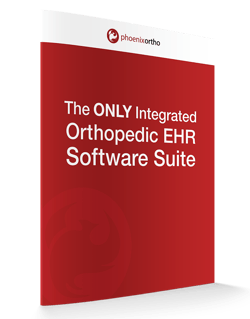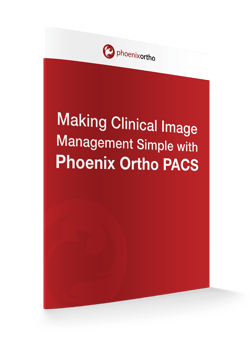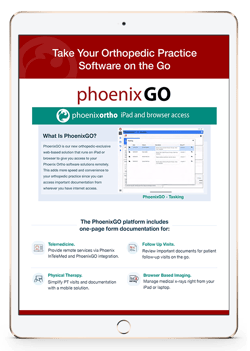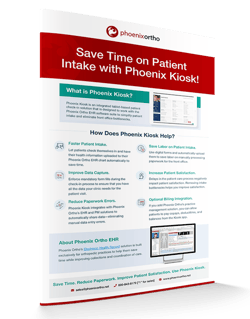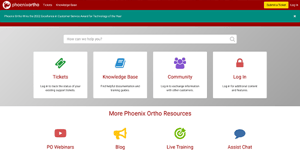Every year, orthopedic surgeons continue to struggle with many of the same challenges: trying to increase the number of patients they see, collecting payment for the care they provide, working with other staff, managing inventory, and more.
Keeping up with these challenges can be difficult in the best of times. However, with patients expecting faster and more convenient care, the pressure on orthopedic physicians and staff has increased.
Orthopedic technology—and especially the software tools used by orthopedic practices—has helped to transform the way that orthopedic clinics operate. With the right tools, orthopedic surgeons and staff can save time, reduce operational complexity, and even improve their payment collection processes.
How Has Technology Changed Orthopedic Surgeons and Their Practices?
There are many different software tools that have helped orthopedic specialists over the years. Some of the key operations-changing solutions include:
- Electronic Health Records (EHR) Software. Orthopedic EHR has transformed the way that surgeons and other staff in the clinic keep track of and share important patient data. Instead of having to manually write out, copy, store, and retrieve paper-based patient files from an overstuffed records room with decades of paperwork hiding each file, physicians and other staff can simply type in the patient’s name and find their relevant information in seconds.
- Practice Management (PM) Software. PM solutions help to streamline key processes in a clinic, such as scheduling appointments, verifying patient eligibility for care, registering patients, and filing claims for services rendered. With electronic claims submissions capabilities, PM software can reduce the wait time to collect from payer organizations from weeks down to a day or two (or even just a couple of hours, in some cases).
- Picture Archiving and Communication System (PACS) Software. Medical imaging has long been a critical part of orthopedic care. To accurately diagnose musculoskeletal conditions and prove them to payer organizations, orthopedic surgeons have used a combination of x-rays, MRIs, and other imaging techniques to noninvasively examine patients.
However, ordering medical images, storing them for future retrieval, and ensuring that those images can be shared with primary care physicians (or other relevant specialists) when needed can be a hassle. PACS solutions greatly streamlined image management—while PACS solutions that integrate fully with orthopedic EHRs further reduced the risk of error and made managing each patient’s medical images even simpler.
These are the big three types of software that revolutionized orthopedic care years ago—and there have been even more developments since then. For example, electronic patient intake apps have streamlined the check-in process for orthopedic clinics—removing that front-office bottleneck and improving patient data capture by using required form fields to ensure that patients answer all medical history questions.
Meanwhile, telemedicine solutions have given orthopedic physicians the ability to consult with their patients in real-time via video chat. This helped to eliminate one of the major barriers to getting new patients (the trip to visit the orthopedist’s office for a checkup). The use of telemedicine solutions was further accelerated during the COVID-19 pandemic when concerns about spreading the disease made it difficult to arrange face-to-face interactions. Now, it’s an indispensable part of modern medical practice.
There are now even mobile apps and browser-based software solutions that allow orthopedic doctors to write, renew, and check their patients’ prescriptions on the go.
Why You Need Technology in Your Orthopedic Practice
Integrating the right orthopedic technology can be a game-changer for your practice. With software optimized for orthopedic workflows and challenges, you can:
- Save Time. When you’re seeing dozens of patients every day, every second of your time matters. For example, if you have to spend two minutes simply finding a patient’s file to start referencing it during a visit, then that’s an extra two hours of work across 60 patients. Orthopedic software helps to reduce the time you spend on paperwork so you can see more patients each day and get home sooner.
- Improve Collections at the Point of Care. Manual claims submissions processes are slow, inefficient, and prone to error—which translates into incredibly long delays in collecting from payer organizations. This can hurt your practice’s cash flow—making it harder to cover your regular expenses and keep your clinic’s doors open.
- Increase Patient Satisfaction. Modern patients are used to a certain level of expedience. They expect to be seen at the time of their appointment and not have to wait around in the lobby (or even the office itself) as staff and doctors trudge through paperwork. Technology solutions help orthopedic clinics streamline processes to remove bottlenecks and improve patient satisfaction—which helps to encourage repeat business.
Another reason to adopt technology is to maintain compliance with regulations like the Health Insurance Portability and Accountability Act (HIPAA)—which requires healthcare providers to maintain copies of medical records and make them available to patients. Being able to store and transmit patient records electronically makes compliance with HIPAA right of access rules much simpler than manually copying and sending them over.
Prepare for the Demands of the Future With Orthopedic Technology
Modern orthopedic practices virtually require the use of technology to keep up with the pace of today’s healthcare industry. Lagging behind the competition technologically speaking means surrendering the advantage (and thus, paying customers) to orthopedists who are keeping up with patient expectations of convenience.
If you’re looking for a way to improve customer satisfaction, enable remote patient care with telehealth solutions, and increase collections, reach out to Phoenix Ortho today! Our orthopedic software suite was created using feedback from real orthopedic physicians and clinical staff.
With Phoenix Ortho, you don’t have to waste time sifting through a bunch of menus and options that aren’t relevant to your orthopedic medical practice. Instead, we’ve streamlined our platform to save you time and headaches on every patient interaction. As the only orthopedic-exclusive vendor, we’re dedicated to your orthopedic clinic’s needs.
Why wait? Get the orthopedic technology solutions your practice needs now!
Schedule a 1:1
Get in touch with Phoenix Ortho to learn more about how you can save time, money, and mouse clicks with an orthopedic-specific EHR.





